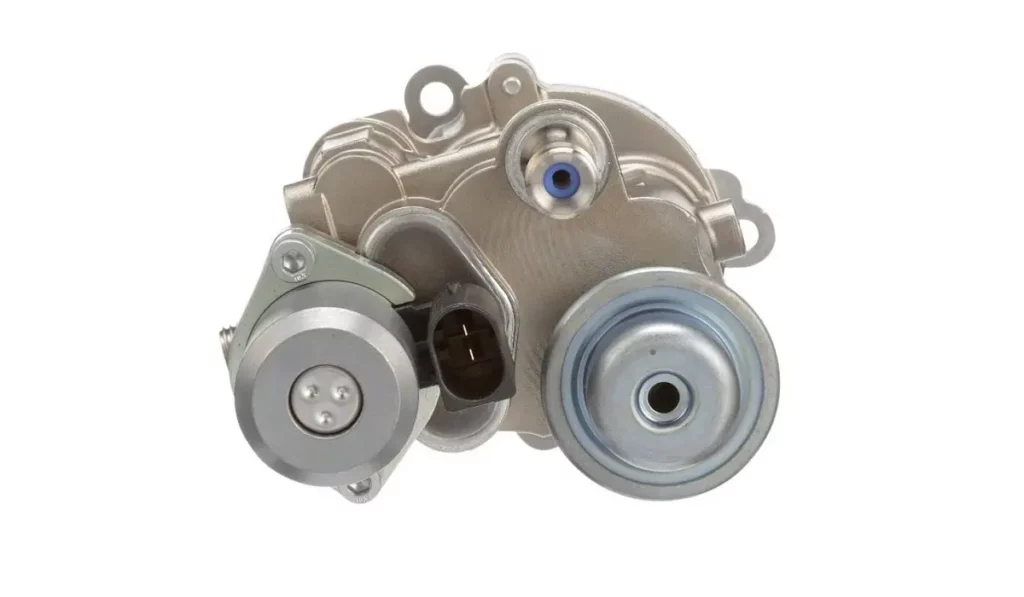As automotive technology advances, the importance of accurate diagnostics cannot be overstated. DTCs like the 29DC BMW code are the breadcrumbs left by your BMW’s computer system, leading you to areas of concern that require attention. By exploring the intricacies of this code and its underlying causes, we can find a way to fix the issue and clear the check engine light.
In the guide that follow, we’ll dissect the 29DC BMW code, focusing on the two primary culprits that trigger it — fueling issues and high pressure fuel pump (HPFP) problems. By understanding the mechanisms behind these issues and learning how to diagnose and address them, you’ll be better prepared to navigate the complex landscape of automotive maintenance. So, buckle up as we embark on this journey of unraveling the mysteries behind the 29DC code and empowering ourselves with the tools to keep our BMWs running smoothly.

Decoding the 29DC BMW Code
Before we delve into the intricate details of fueling issues and High-Pressure Fuel Pump (HPFP) problems, let’s first establish a solid foundation by understanding the significance of Diagnostic Trouble Codes (DTCs) and their role in modern vehicle diagnostics.
What are DTCs?
Diagnostic Trouble Codes are alphanumeric combinations generated by a vehicle’s onboard computer system, often referred to as the Engine Control Module (ECM) or Powertrain Control Module (PCM). These codes serve as a communication tool between your vehicle and a diagnostic scanner, allowing mechanics and technicians to identify underlying issues within the various systems of your car. Each DTC corresponds to a specific problem or anomaly, making it easier to pinpoint the source of the problem.
The Importance of DTCs
DTCs play a pivotal role in identifying problems that might not be immediately noticeable to the driver. While warning lights and unusual sounds can provide clues, DTCs offer a more precise insight into the condition of the vehicle’s intricate systems. By recognizing and interpreting these codes, both automotive professionals and enthusiasts can save time and effort during troubleshooting, ultimately leading to quicker and more accurate repairs.
The 29DC BMW Code: An Overview
Our focus in this blog post centers around the 29DC BMW code. This particular code is not just a random assortment of characters; it holds the key to diagnosing issues related to fueling and High-Pressure Fuel Pump (HPFP) problems in BMW vehicles. Understanding this code and its implications can shed light on engine performance, fuel efficiency, and overall driving experience.
Fueling Woes: Causes of the 29DC Code
Fueling problems can lead to a range of performance issues and impact your driving experience. In this section, we’ll explore the primary causes of the 29DC code related to fueling issues, shedding light on the intricacies of each potential culprit.
Fuel Injector Problems
Fuel injectors play a crucial role in delivering the precise amount of fuel to each cylinder for efficient combustion. When fuel injectors malfunction, they can disrupt this delicate balance, resulting in misfires and reduced engine efficiency. The 29DC code may be triggered when one or more fuel injectors fail to perform optimally. Symptoms can include rough idling, decreased power, and reduced fuel economy.
Fuel Pressure Regulator Issues
The fuel pressure regulator is responsible for maintaining the proper fuel pressure within the fuel delivery system. If the regulator fails, it can lead to erratic fuel pressure, causing issues like poor fuel atomization and uneven combustion. These problems can trigger the 29DC code, as the engine struggles to operate smoothly. Look out for signs such as rough idling, hesitation during acceleration, and potential fuel leaks.
HPFP Woes: Unveiling HPFP-Related Triggers
As we continue our journey into deciphering the 29DC BMW code, we now turn our attention to a crucial component that can trigger this code: the High-Pressure Fuel Pump (HPFP). The HPFP is a vital element in your BMW’s fuel delivery system, ensuring that fuel is delivered at the right pressure for optimal combustion. In this section, we’ll delve into the HPFP-related problems that can lead to the 29DC code and explore the impact they can have on your vehicle’s performance.
HPFP Failure
A failing High-Pressure Fuel Pump can disrupt the delicate balance of the fuel delivery system. When the pump can’t maintain the necessary pressure, the engine’s combustion process is compromised, leading to misfires and decreased power. As a result, the 29DC code can make its presence known. Keep an eye out for symptoms like rough running, reduced acceleration, and potentially even stalling.
Low Fuel Pressure
Insufficient fuel pressure can stem from various HPFP-related issues, such as a worn-out pump or clogged fuel lines. Low fuel pressure directly affects the combustion process, leading to irregular engine operation and poor performance. The 29DC code can serve as a warning sign of this problem. Be vigilant for symptoms like rough idling, difficulty starting, and an overall decrease in power and efficiency.
Diagnostic Steps and Potential Solutions
Equipped with an understanding of the fueling issues and High-Pressure Fuel Pump (HPFP) problems that can trigger the 29DC BMW code, it’s time to roll up our sleeves and start diagnosing the issue while looking for potential solutions. In this section, we’ll outline the steps you can take to pinpoint the root cause of the 29DC code and explore the potential remedies to restore your BMW’s optimal performance.
Diagnostic Scan
Begin by connecting a diagnostic scanner to your BMW’s onboard computer system. Retrieve the specific details associated with the 29DC code, as well as any other codes that might be present. This data can offer insights into which cylinder is experiencing the misfire and provide additional context to guide your diagnosis.
Fuel System Inspection
Inspect the fuel system components thoroughly. Check the condition of fuel injectors, fuel lines, and the fuel pressure regulator. Look for signs of clogs, leaks, or irregularities that might be affecting fuel delivery. Address any issues you discover to ensure a proper fuel supply to the engine.
HPFP Evaluation
Shift your focus to the High-Pressure Fuel Pump. Test its functionality and measure the fuel pressure it delivers. Compare the readings to the manufacturer’s specifications. If the pressure falls below the recommended range, it’s a strong indication that the HPFP might be at the heart of the problem.
Addressing Fueling Issues
If fueling issues are the likely culprits behind the 29DC code, consider cleaning or replacing clogged fuel injectors. Additionally, ensure the fuel pressure regulator is functioning correctly and replace it if needed. Regular maintenance of these components can prevent recurring issues.
Resolving HPFP Problems
Should HPFP problems be causing the 29DC code, replacing the faulty pump might be necessary. Ensure that the replacement part is of high quality and meets the manufacturer’s specifications. Professional assistance might be beneficial during this process.
Fix your 29DC BMW Code with Quality BMW Parts!
In the world of automotive diagnostics, the 29DC BMW code serves as a crucial guidepost, directing your attention toward fueling issues and High-Pressure Fuel Pump (HPFP) problems. Through our exploration of this code, we’ve discussed the complexities behind its triggers and provided a roadmap for diagnosis and potential solutions. If you’re looking for fuel system parts for your BMW, you’re in the right place! We offer a wide range of quality BMW parts made by some of the best brands in the business. Check our catalog and find everything you’re looking for at sharp prices!






